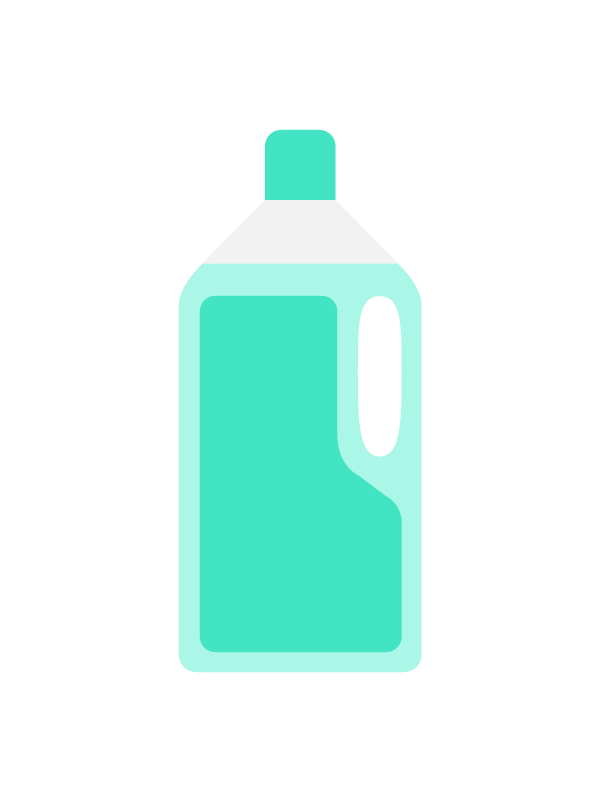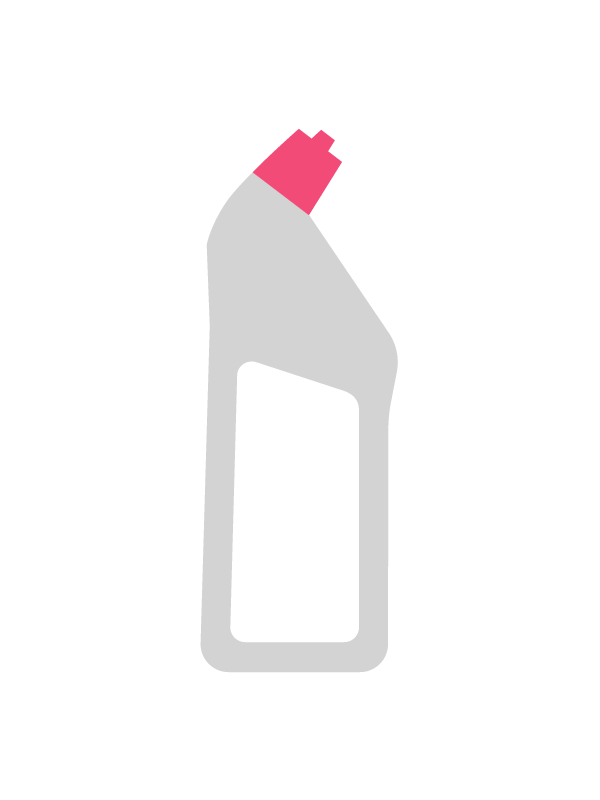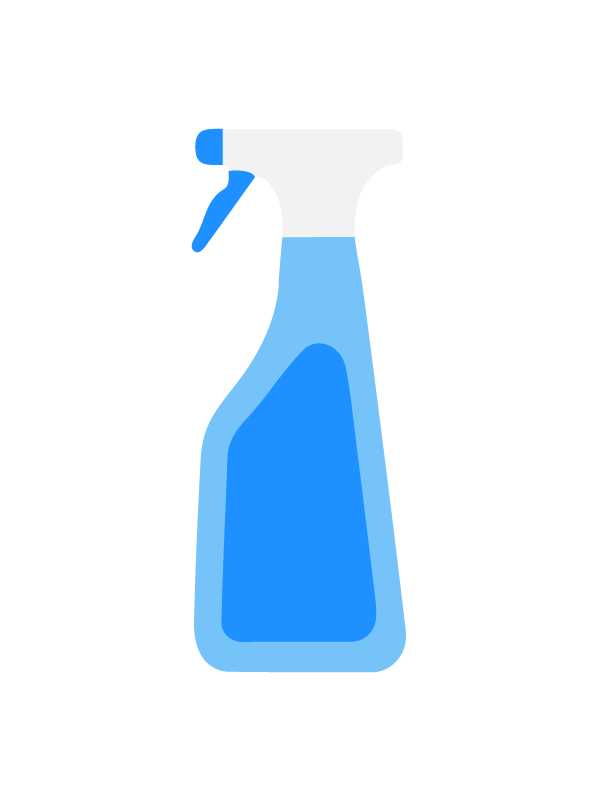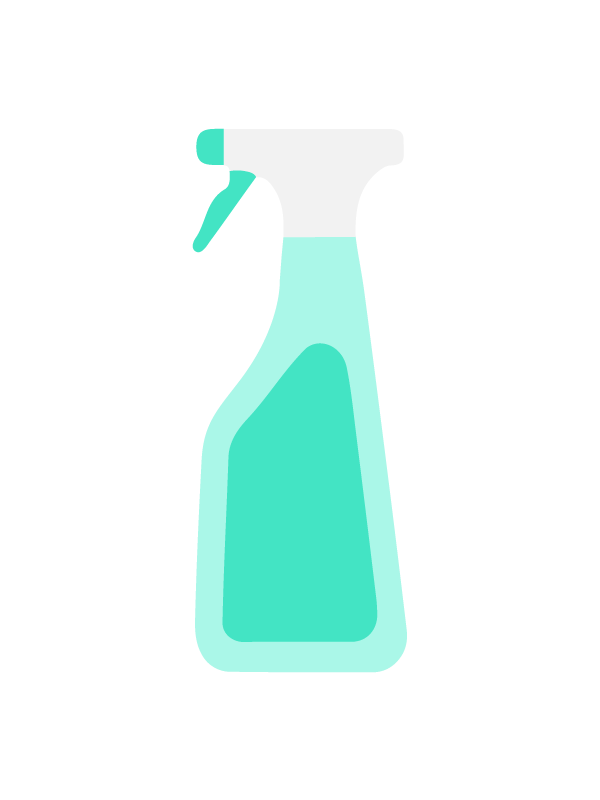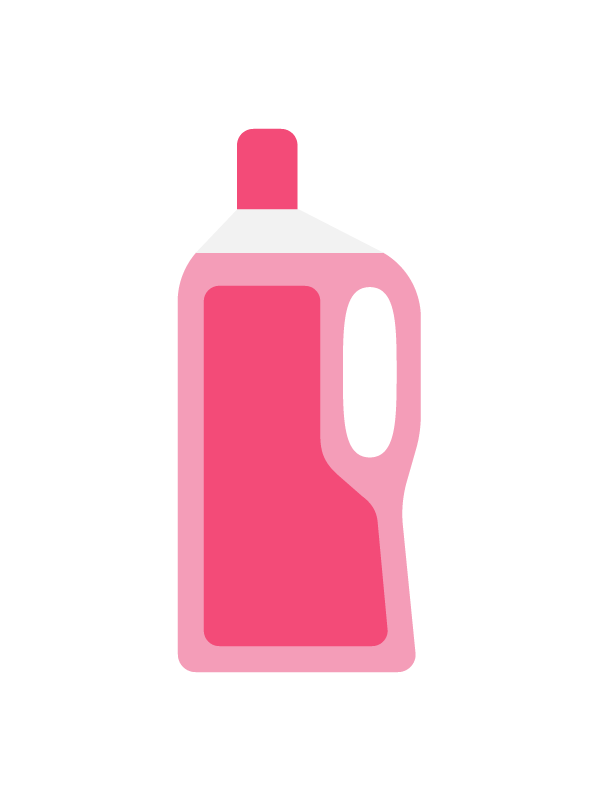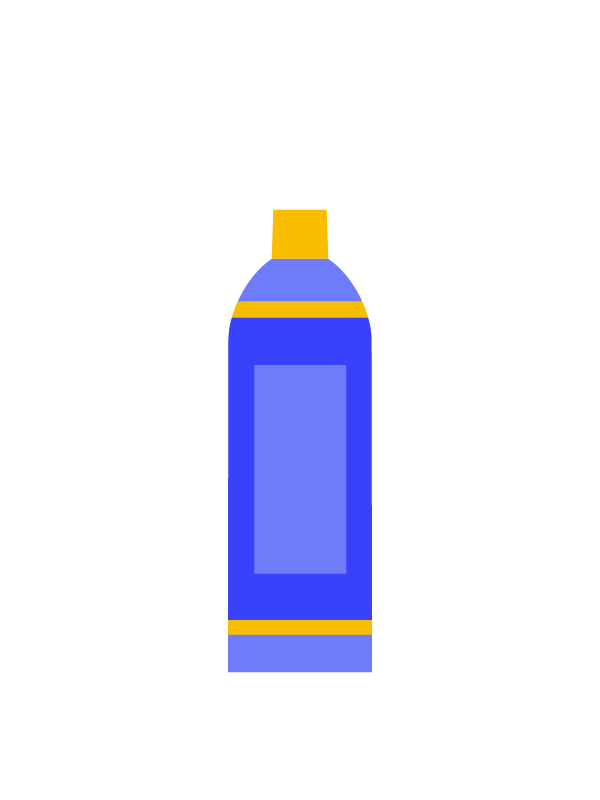Ključni nasveti
The toilet brush should be used regularly for a clean toilet. Toilet cleaners remove limescale and dirt and provide a fresh scent.
Always make sure to wash your hands with soap and water and dry them thoroughly after using the toilet and after cleaning the toilet.
Thick bleach has very good cleaning and disinfecting properties.
Descale the toilet regularly. Acidic toilet cleaners not only clean well but are especially good at removing limescale.
Placing a rim blocks in the toilet bowl will help keep the toilet fresh, clean and free from odours every day and provide a fresh scent.
You may want to use a disinfectant to clean the toilet bowl, seat and flush handle if someone in your household is ill or has an infection.
Surface care
Ali ste vedeli?
Cleaning utensils used for the toilet should only be used in the toilet area.
Using the toilet is one of the key moments for hygiene (if someone has a gut infection, when potentially harmful organisms can spread to our hands and other surfaces).
The toilet is designed to remove faecal waste safely from our homes.
If you have a gut infection, potentially harmful organisms can be spread to hands and other surfaces (lid, handle) whilst using the toilet.
Small numbers of faecal organisms, not removed by flushing, can persist in the toilet, particularly where there is a build-up of scale on the surface.
Other waterborne organisms can persist and grow in toilet water, e.g. under the toilet rim. These microbes are not normally harmful to health but some can cause unpleasant odours.
You can save water by selecting the water saver option on a dual-flush toilet.
Closing the lid of the toilet bowl before flushing helps prevent germs from spreading to nearby surfaces.
If someone has recently had a gut infection, clean and disinfect the toilet once or even twice daily to protect others.
Immediately after cleaning the toilet, clean and dry cloths and other cleaning utensils.
Harmful microbes can survive in damp cloths etc and other microbes can grow that cause unpleasant odours.
